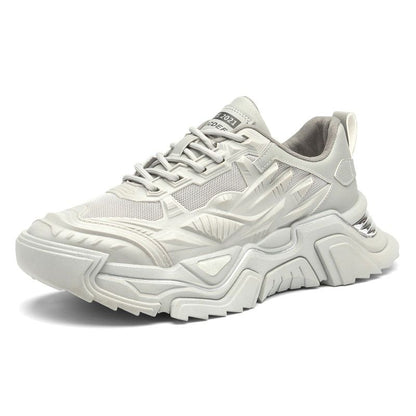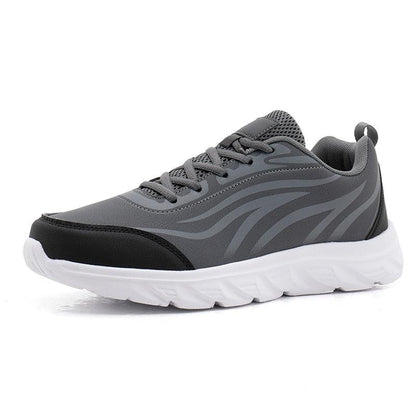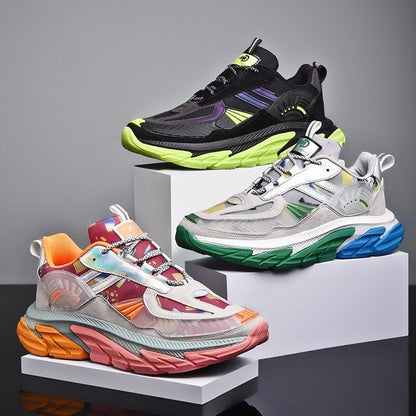
Cushioning is one of the most important factors when choosing running shoes. It can assist in minimizing the impact on your joints and muscles, enhancing the comfort and longevity of your runs. But with so many cushioning levels available, knowing which one is right for you can take time and effort.
In this blog post, we'll break down the different cushioning levels in running shoes and help you choose the right pair for your needs.
Casual and running shoes use different cushioning levels to provide comfort and support. Casual shoes are crafted for everyday use with minimal cushioning while running shoes are engineered to absorb the impact of running and thus feature greater cushioning.
In this blog post:
- What is cushioning?
- Why is cushioning necessary for running shoes?
- Different cushioning levels in running shoes
- How to choose the right cushioning level for you
- Benefits of different cushioning levels
- Drawbacks of different cushioning levels
- Popular running shoes with different cushioning levels
- Conclusion
What is cushioning?
Cushioning is a material or technology that absorbs impact and reduces vibration. In running shoes, cushioning is typically found in the midsole, the foam layer between the outsole and the upper.
Why is cushioning essential for running shoes?
Running shoes need cushioning because it absorbs the shock of your foot hitting the ground. That alleviates stress on your joints and muscles, enhancing the comfort and longevity of your runs.
Different cushioning levels in running shoes
There are three primary cushioning levels in running shoes:
- Minimal cushioning: Minimal cushioning shoes have very little foam in the midsole. They are designed for runners who want a more natural feel and don't need much cushioning.
- Moderate cushioning: Moderate cushioning shoes have a good balance between cushioning and responsiveness. They are a good choice for most runners, especially those new to running or who have a variety of running goals.
- Maximum cushioning: Maximum cushioning shoes have the most foam in the midsole. They are designed for runners who need a lot of cushioning, such as heavy runners or runners with joint pain.
How to choose the right cushioning level for you
The best way to choose the right cushioning level is to consider your needs and preferences. Here are a few things to think about:
- Your weight: Heavier runners typically need more cushioning than lighter runners.
- Your footstrike: You may benefit from more cushioning if you are a heel striker.
- Your running goals: If you are training for a marathon or other long-distance race, you may need more cushioning.
- Your injury history: You may benefit from more cushioning if you have joint pain or other injuries.
It's equally important to experiment with various pairs of running shoes to discover the one that provides the best comfort and fit for you. Some running stores have treadmills where you can try on shoes and run in them for a few minutes to see how they feel.
Benefits of different cushioning levels
- Minimal cushioning: Minimal cushioning shoes can help to improve your running form and strengthen your muscles. They can also be lighter and more responsive than other running shoes.
- Moderate cushioning: Moderate cushioning shoes offer a good balance between comfort and performance. They are a good choice for most runners, especially those new to running or who have a variety of running goals.
- Maximum cushioning: Maximum cushioning shoes offer the most comfort and protection. They are a good choice for heavy runners or runners with joint pain.
Drawbacks of different cushioning levels
- Minimal cushioning: Minimal cushioning shoes may not be comfortable for everyone, especially those new to running or with joint pain. They may also need to be more suitable for long-distance running.
- Moderate cushioning: Moderate cushioning shoes may not offer enough cushioning for heavy runners or runners with joint pain.
- Maximum cushioning: Maximum cushioning shoes can be heavier and less responsive than other running shoes. They may also be more expensive.
Popular running shoes with different cushioning levels
Here are a few popular running shoes on Touchy Style with different cushioning levels:
- Men's Lightweight Leather Sneakers: HZ153 Casual Sport Running Shoes
- Men's Casual Shoes 2021 Sports Breathable Mesh Comfort Running Shoes
- Men's Women's Unisex Casual Shoes LCLS36 Breathable Running Sneakers
- Men's Casual Shoes Chunky Sneakers Running Footwear 18157
Conclusion
Choosing the right cushioning level for your running shoes is vital for comfort, performance, and injury prevention. Consider your weight, footstrike, running goals, and injury history when deciding. It is also essential to try on different pairs of shoes to see what feels best for you.
Starting with a moderate cushioning shoe is generally best if you are new to running or have joint pain or other injuries. Once you have gained more experience and your body has adapted to running, you can experiment with different cushioning levels to find what works best for you.
Here is a quick summary of the different cushioning levels and their benefits and drawbacks:
Minimal cushioning:
- Benefits: Lightweight, responsive, can help improve running form and strengthen muscles
- Drawbacks: It may not be comfortable for everyone, especially those new to running or with joint pain. It may not be suitable for long-distance running.
Moderate cushioning:
- Benefits: Good balance between comfort and performance, good choice for most runners
- Drawbacks: It may not offer enough cushioning for heavy runners or runners with joint pain.
Maximum cushioning:
- Benefits: Most comfortable and protective, good choice for heavy runners or runners with joint pain
- Drawbacks: Heavier and less responsive than other running shoes, can be expensive.
Ultimately, the best way to choose the right cushioning level is to experiment and find what feels best for your needs.









